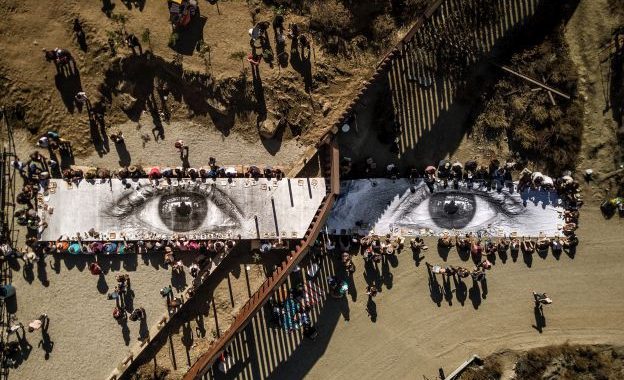The cogito ergo sum of a border would arguably be “I divide therefore I am”. Every other claim about what a border does can be disputed, found to be partial, inaccurate or out-dated, but there is no border that does not divide one thing from something else.
Ever since borders first became a particular technology of making nation-states as we know them, things have changed. The methods in use, the agents at play, the subject groups that are divided have been in a constant flux.
A wide set of technologies ranging from landmines and patrol ships, satellite surveillance systems and heart beat detectors, to biometric databases and of course, passports and stamps, have arguably detached the notion of the border from the idea of “a line in the sand”. In addition, NGO’s now play a significant role in the management of refugee camps, management companies provide “solutions” in the logistics of migration management, and tech companies continue to develop new apparatuses of control and surveillance and thus are arguably considered border “agents” functioning alongside the state sanctioned ones.
Thus, instead of talking about a “border” it makes, sense to talk about bordering as the outcome of a series of practices carried out by a diverse set of actors; state and non-state as well as institutional and informal. The practices of such actors are not geographically limited to border crossing venues and routes, but instead take place inside the territories of the receiving states, in the migrant’s country of origin, and within an international digital infrastructure. For some individuals, “the border is everywhere”, others may not even notice it.
Moving on from briefly touching upon the ontological question of what a border is and where we can locate it, there is more to be said on what “bordering practices” do. They divide, that’s clear. But there is more to it than that. They perform their subjects, as they are not just selecting mechanisms that mundanely apply a set of clearly pre-defined criteria and classify this or that individual as a legitimate or irregular traveler. The actions and methods of border officials, the architecture of border venues, the way that screening of migrants and asylum procedures work, the use of data stored in migration related databases and the laws that legislate all of the above, are constantly constructing their subject. Doctors estimate a person’s age and this estimate shapes the person’s future mobility. Translators working with border guards decide on the country of origin of asylum seekers, often using technologies such as Google maps. Asylum handlers judge a person’s need for international protection based on reports conducted by human investigators. New laws illegalize populations on the move.
Categories that emerge as the outcome of bordering practices are often seen as existing “in the wild”. However, they would not exist without the perfomative agency of bordering practices. Borders, are, as Callon puts it in reference to economics, “machines”, and not “mirrors”.
Author: Vasilis Spyridon Vlassis
